The City Nature Challenge 2021 has come and gone. More than 1,270,000 observations were uploaded to the www.iNaturalist.org database from individuals in 419 cities from 44 countries worldwide.
The challenge is in its sixth year and the fourth year that the Lower Rio Grande Valley participated. This year, 146 local participants logged 7,966 observations of 1,730 individual species of plants, birds, creatures and critters found in the four-county area of Cameron, Hidalgo, Starr and Willacy.
I got the idea for this following story from a brief survey I found on a Facebook page asking for feedback about this year’s City Nature Challenge. One of the survey areas asked for an account of a favorite experience and requested the link to the observation be included — and limited the entries to three. I had more than three exciting experiences this year; the observation links to those experiences are included.
First of all, some of us native plant aficionados in the Rio Grande Valley Texas Master Naturalist chapter are saddened by the absence of what should be a common and prevalent sight: Southern Indian blanket, Gaillardia pulchella.
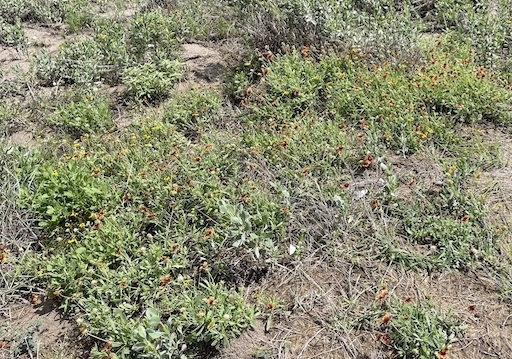
On my way back from Boca Chica Beach, I was startled to see a large patch of Indian blankets, just at the edge of the road. Thinking they have become exceedingly rare, I thought I should take advantage of the photo opportunity. I whipped the car off the road, unleashed my seatbelt and bounded out of the car and over to the patch of wildflowers. I heard shouting — I took my first shot — and only shot! Space X security personnel were yelling at me; two security cars were heading my way. I jumped back in my car. After a couple of bumps, I was off the verge, back onto the road and speeding away, which is when I noticed chunks of metal in the distant field — obviously debris from the latest wreckage. I kept one eye on the road ahead and the other on the rearview mirror. The security cars turned back; they did not follow.
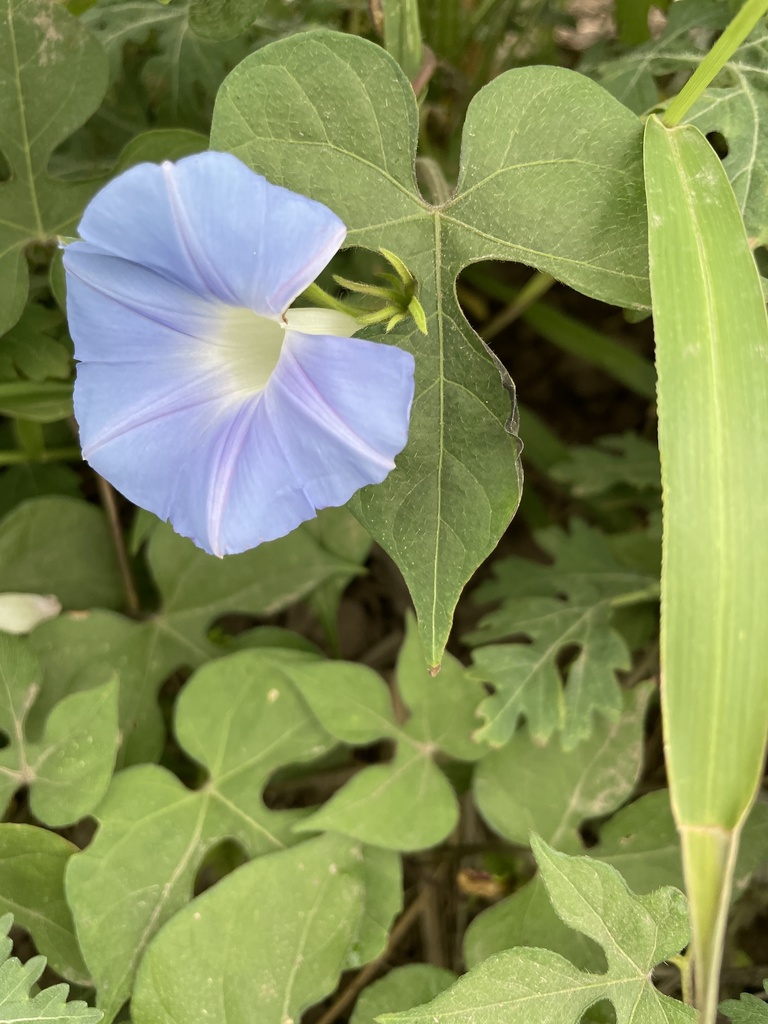
Back home, in the safety of the road at the edge of the neighboring farm field, I was excited to see something blue peeking out from under a row of false ragweed (Parthenium hysterophorus). The flowers were of ivy-leaved morning-glory (Ipomoea hederacea) Native to Central America, ivy-leaved morning-glory has naturalized in tropical, subtropical and warm temperate regions throughout the globe and is found in 46 states in the United States. It is an annual twining vine. It can climb fences, neighboring plants and other supports but is commonly found creeping along the ground and under other vegetation. The habitat includes abandoned fields, along roadsides and railroad tracks and quite commonly along the edges of cultivated fields near the roadside, which is where I found my observation.
The ivy-leaved morning-glory flower is somewhat small for a morning glory, measuring from one and one-quarter inch to two inches at the flare of the funnel-shaped flower. The petals are blue with five violet markings that radiate from the white center and create a star burst effect.

This was a which-way-do-I-look-first event because directly across from the blue flowers, right at the edge of the road, was a large splash of white flowers, low to the ground. After taking multiple shots of the morning glories, I crossed the road and photographed the white flowers, which turned out to be the rare, white-blooming form of Pinkladies, (Oenothera speciosa) At first, in the sun-glare on the face of the phone, using the iNaturalist app, I thought I had come upon silky evolvulus, (Evolvulus sericeus), but three identifiers corrected that observation.
On the last day of the challenge, after the incident coming back from Boca Chica Beach, I thought I’d play it safe and spend a couple of hours in the confines of a gated community at our county park, Isla Blanca Park on South Padre Island. I wasn’t disappointed — and I was safe — not even a bumble bee chased me. I found more Indian blanket observations and some incredible blooms of Northern seaside goldenrod, Solidago sempervirens. Perhaps not incredibly thrilling but exciting just the same because the blooms of goldenrod are so beautiful. Pressed for time, I didn’t stop at other goldenrod opportunities that afternoon.
What was really exciting was the discovery of something new to me: Lonestar Four O’Clock (Mirabilis austrotexana).
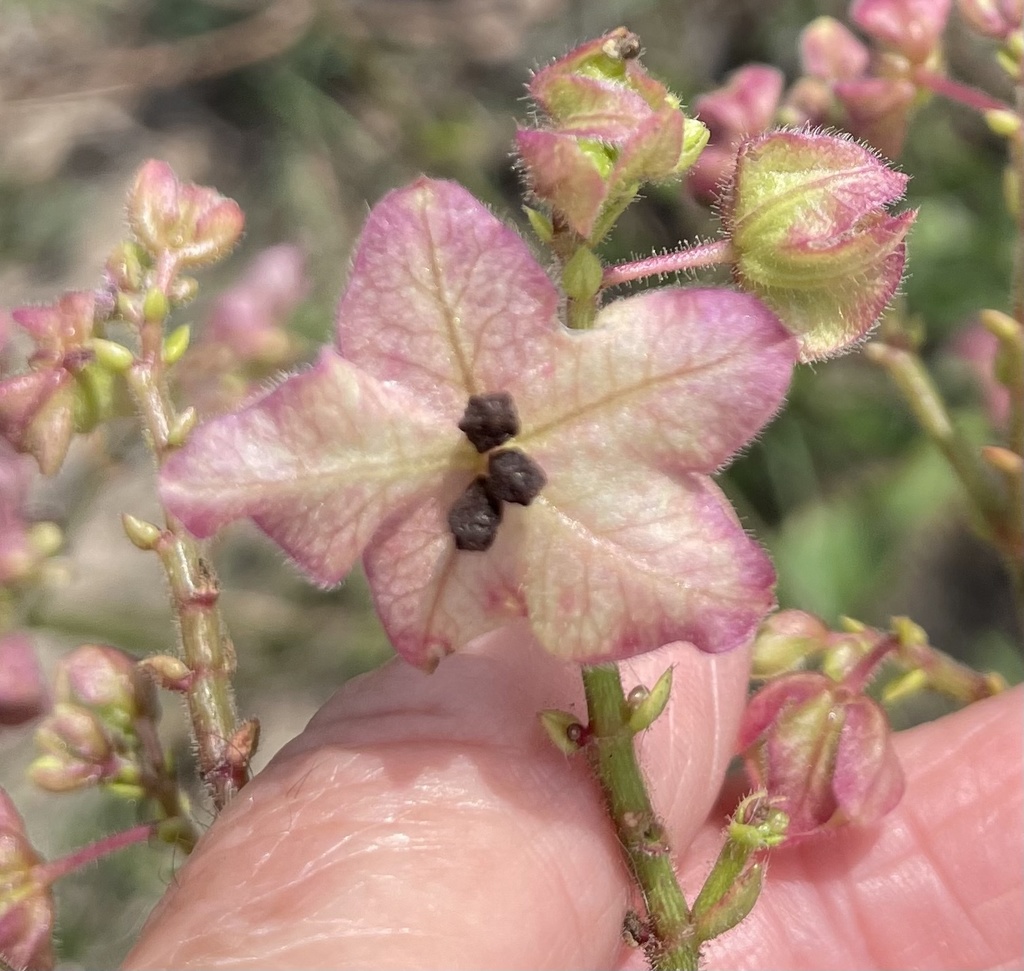
Leaving the beach and park and heading toward the center of South Padre Island, I swung by Sheepshead Street. As soon as I approached the north side entrance, a gentleman whispered and motioned for me to come quickly. We both quietly sidled over to the fence, placed our heavy cameras on the top rail and captured photos of a vibrantly colored Summer Tanager (Piranga rubra) What right-time-right-place luck for me — I finally have a good photograph of the Summer Tanager.
Heading out to the convention center proved a worthwhile stop. I added a number of birds to my observations:
- Chestnut-sided Warbler
- Wilson’s Warbler
- Eastern Wood-pewee
- Baltimore Oriole
- Orchard Oriole
- Northern Parula
- Painted Bunting
- Great Crested Flycatcher
- Scissor-tailed Flycatcher
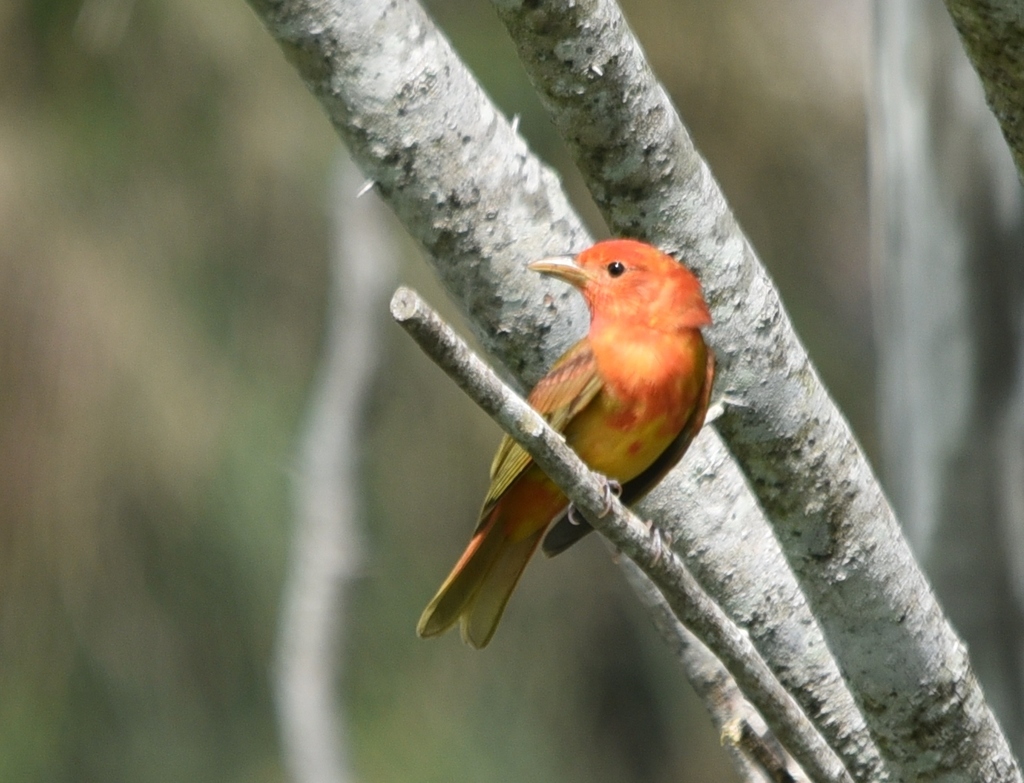
At home, on the first morning of the City Nature Challenge, I was able to photograph our three common nighthawks as they hawked for breakfast in the field across the road and later that morning, one of our white-tailed kites in flight with a photo clear enough for identification.
Most of the observations during the four-day bio blitz were without incident. I was rather disappointed (frightened) to discover so many big dogs quietly stalking me as I photographed along the side of the roads near our house where it used to be safer. After a near-too-close encounter with a pretty, but scary-looking Rottweiler, I learned to keep the scooter running while I dismounted to capture photos along the road with my phone.
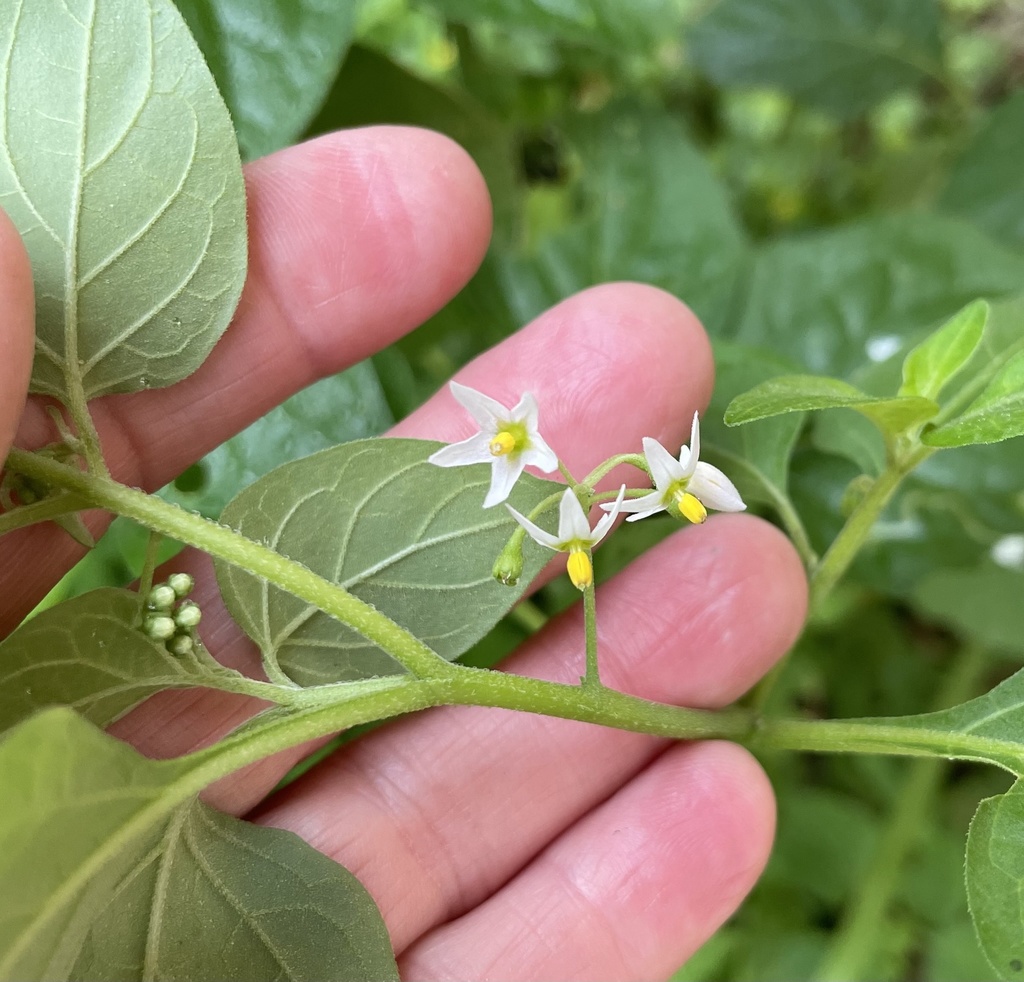
Closer to home — in my own back yard, as a matter of fact — I was thrilled to observe a two-foot tall Eastern black nightshade (Solanum emulans), — which brings my yard species of nightshade to three. I also have Texas nightshade (Solamum triquetru) and silverleaf nightshade (Solamum elaeagnifolium) — good quail food, if only the quail would return.
One last exciting find was during the hours of darkness. I set up a moth sheet with black lights. One of the more significant night visitors was the Theodore carpenterworm moth (Givira theodori), a pretty white, black and gray moth that I had not seen before.
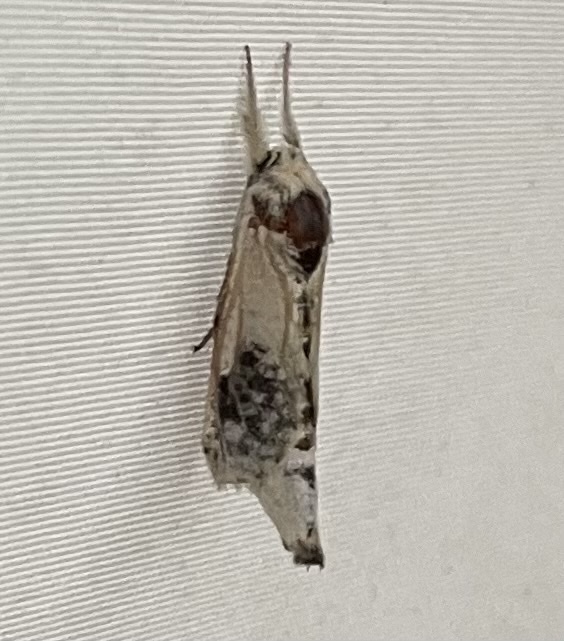
This was the fourth year that I have participated in the City Nature Challenge, and it is always a fun way to spend time and see what new there is to discover.
The City Nature Challenge is run by the Community Science teams at the California Academy of Sciences and the Natural History Museum of Los Angeles County. Check out the results of the Lower Rio Grande Valley participation at the link below.
https://rgvctmn.org/wp-content/uploads/2021/07/CNC-2021-Review.pdf
https://www.inaturalist.org/projects/city-nature-challenge-2021-lower-rio-grande-valley

Leave a Reply